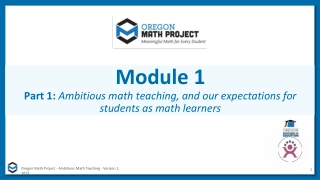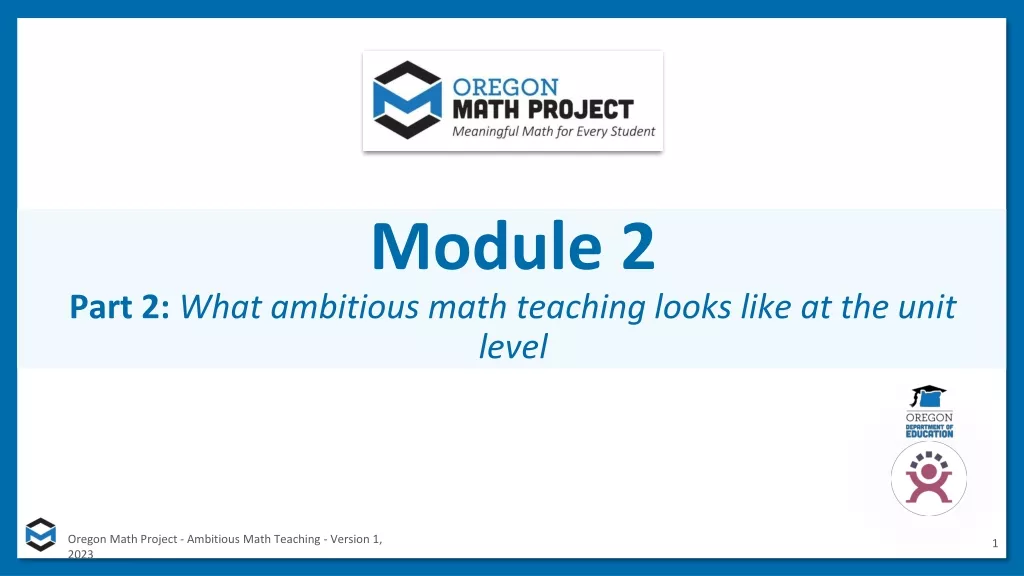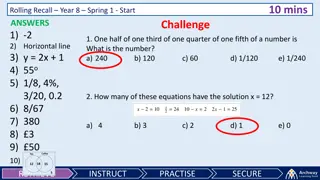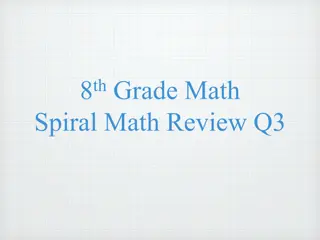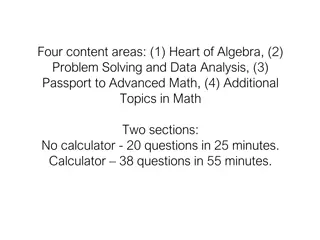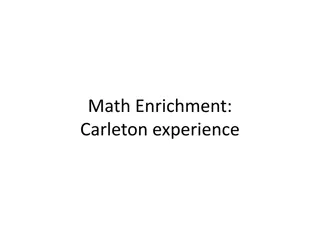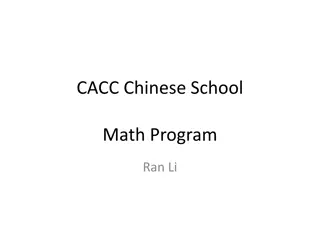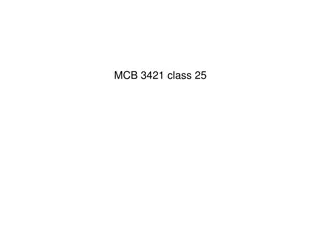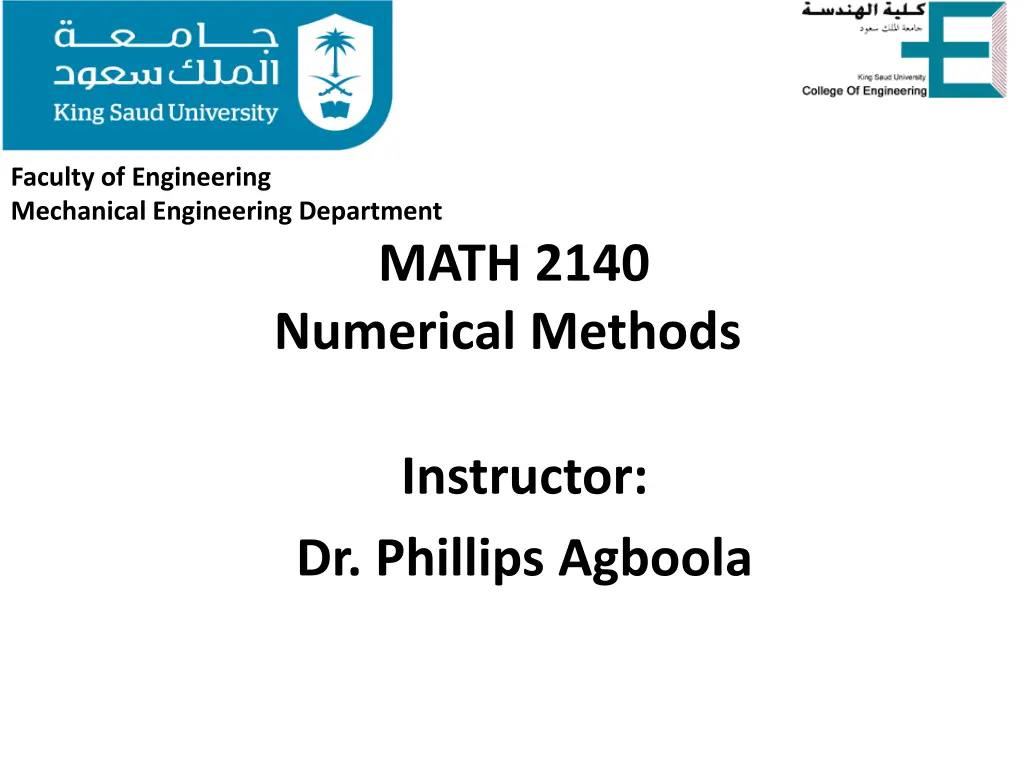
Mechanical Engineering Department Numerical Methods Course Overview
"Explore the curriculum of MATH 2140 Numerical Methods course in the Mechanical Engineering Department, covering topics like nonlinear equations, linear systems, numerical differentiations, integrations, and more, taught by Dr. Phillips Agboola. Assessment tasks and required text are also included."
Download Presentation

Please find below an Image/Link to download the presentation.
The content on the website is provided AS IS for your information and personal use only. It may not be sold, licensed, or shared on other websites without obtaining consent from the author. If you encounter any issues during the download, it is possible that the publisher has removed the file from their server.
You are allowed to download the files provided on this website for personal or commercial use, subject to the condition that they are used lawfully. All files are the property of their respective owners.
The content on the website is provided AS IS for your information and personal use only. It may not be sold, licensed, or shared on other websites without obtaining consent from the author.
E N D
Presentation Transcript
Faculty of Engineering Mechanical Engineering Department MATH 2140 Numerical Methods Instructor: Dr. Phillips Agboola
1.Topics to be covered No of Topics Contacthours Weeks Number Representation and base Number, Error,Sources of Errors 1 3 Nonlinear equations, Simple and Multiple roots of nonlinear equations, numerical methods for simple root (bisection, fixed-point, Newton s, scant) and multiple (modified) root 2 6 Convergence of iterative methods for nonlinear equations, System of nonlinear equations (Newton s method) 1 3 Linear systems, special matrices, direct methods (Gauss-elimination and its variants), LU decomposition) for linear system, norms, iterative methods (Jacobi and Gauss-Seidel), error in linear systems 2 6 Approximating functions, polynomial interpolation (Lagrange and Newton s divided differences) formulas, error approximations 2 6 Numerical differentiations, approximation of first derivative of a function using numerical formulas (two-point and three-point), approximating second derivative of a function using three point formula 2 6 Numerical integration, using closed Newton s cotes formula (Trapezoidal and Simpson s rules) 2 6 Solution of ordinary differential equations by Taylorand Runge-Kutta method of order 2 2 6 Total number of weeks and contact hours per semester 14 42 6/18/2025 Dr. Mohamed Elshazly 2
5. Schedule of Assessment Tasks for Students During the Semester Proportio n of Final Assessme nt Assessment task (eg. essay, test, group project, examination etc.) Assessment Week due Every Week Alternatin g 1 Homework 10% 2 Quizzes 20% After 7th week 3 Midterm Exam 25% Every Week 4 Class Participation 5% End of Semester 5 Final Exam 40% 6 6/18/2025 Dr. Mohamed Elshazly 3
1. Required Text(s) Numerical Analysis By R.L.Burden, J.D.Faires (7thedition), Thomos Learning 6/18/2025 Dr. Mohamed Elshazly 4
Introduction 1.1 BACKGROUND Numerical methods are mathematical techniques used for solving mathematical problems that cannot be solved or are difficult to solve analytically. An analytical solution is an exact answer in the form of a mathematical expression in terms of the variables associated with the problem that is being solved. A numerical solution is an approximate numerical value (a number) for the solution. Although numerical solutions are an approximation, they can be very accurate. In many numerical methods, the calculations are executed in an iterative manner until a desired accuracy is achieved. 6/18/2025 Dr. Mohamed Elshazly 5
For example, Fig. 1-1 shows a block of mass m being pulled by a force F applied at an angle By applying equations of equilibrium, the relationship between the force and the angle is given by: 6/18/2025 Dr. Mohamed Elshazly 6
Solving Nonlinear Equations 3.1 BACKGROUND Equations need to be solved in all areas of science and engineering. An equation of one variable can be written in the form: A solution to the equation (also called a root of the equation) is a numerical value of x that satisfies the equation. Graphically, as shown in Fig. 3-1, the solution is the point where the function f(x) crosses or touches the x-axis. An equation might have no solution or can have one or several (possibly many) roots. 6/18/2025 Dr. Mohamed Elshazly 7
For example, the area of a segment As of a circle with radius r (shaded area in Fig. 3-2) is given by: To determine the angle if As and r are given, Eq. (3.2) has to be solved for . Obviously, cannot be written explicitly in terms of As and r, and the equation cannot be solved analytically. 6/18/2025 Dr. Mohamed Elshazly 8
A numerical solution of an equation f(x) = 0 is a value of x that satisfies the equation approximately. This means that when x is substituted in the equation, the value of f(x) is close to zero, but not exactly zero. For example, to determine the angle for a circle with r = 3 m and As = 8 m2, Eq. (3.2) can be written in the form: 6/18/2025 Dr. Mohamed Elshazly 9
A plot of f() (Fig. 3-3) shows that the solution is between 2 and 3. Substituting = 2.4 rad in Eq. (3.3) gives f( ) = 0.2396, and the solution = 2.43 rad gives f( ) = 0.003683. Obviously, the latter is a more accurate, but not an exact, solution. It is possible to determine values of that give values of f( ) that are closer to zero, but it is impossible to determine a numerical value of e for which f( ) is exactly zero. When solving an equation numerically, one has to select the desired accuracy of the solution. 6/18/2025 Dr. Mohamed Elshazly 10
3.3 BISECTION METHOD The bisection method is a bracketing method for finding a numerical solution of an equation of the form f(x) = 0 when it is known that within a given interval [a, b], f(x) is continuous and the equation has a solution. When this is the case, f(x) will have opposite signs at the endpoints of the interval. As shown in Fig. 3-6, if f(x) is continuous and has a solution between the points x = a and x = b , then either f(a) > 0 and f(b) < 0 or f(a) < 0 and f(b) > 0. In other words, if there is a solution between x =a and x = b, then f(a)f(b) < 0 6/18/2025 Dr. Mohamed Elshazly 11
6/18/2025 Dr. Mohamed Elshazly 12
Algorithm for the bisection method 1. Choose the first interval by finding points a and b such that a solution exists between them. This means that f(a) and f(b) have different signs such that f(a)f(b) < 0. The points can be determined by examining the plot of f(x) versus x. 2. Calculate the first estimate of the numerical solution xNs1 by: 3. Determine whether the true solution is between a and xNS1, or between xNs1 and b. This is done by checking the sign of the product f(a) f(xNsi) : If f(a) f(xNsi) < 0, the true solution is between a and xNsi If f(a) f(xNsi) > 0, the true solution is between xNsi and b. 4. Select the subinterval that contains the true solution (a to x NSI, or xNsi to b) as the new interval [a, b], and go back to step 2. Steps 2 through 4 are repeated until a specified tolerance or error bound is attained. 6/18/2025 Dr. Mohamed Elshazly 13
6/18/2025 Dr. Mohamed Elshazly 14
SOLUTION To find the approximate location of the solution, a plot of the function: f(x) = 8-4.5(x- sinx) is made by using the fplot command of MATLAB. The plot (Fig. 3-8), shows that the solution is between x = 2 and x = 3. The initial interval is chosen as a = 2 and b = 3 . 6/18/2025 Dr. Mohamed Elshazly 15
6/18/2025 Dr. Mohamed Elshazly 16
Example-1 Find the root of: = + 3 ( ) 3 1 in the interval [0,1] : f x x x * continuous is = f ) f(x) = * 0 , 1 ) 1 ( 1 ( ) ( ) 0 f( f a f b Bisection method can used be to find the root 17 CISE301_Topic2
Example-1 c= (a+b) 2 (b-a) 2 a b f(c) Iteration 1 0 1 0.5 -0.375 0.5 2 0 0.5 0.25 0.266 0.25 3 0.25 0.5 .375 -7.23E-3 0.125 4 5 0.25 0.3125 0.375 0.375 0.3125 0.34375 9.30E-2 9.37E-3 0.0625 0.03125 18 CISE301_Topic2

